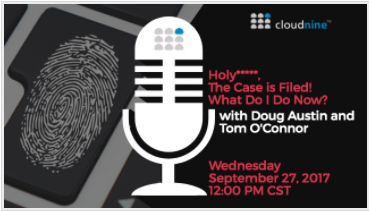Court Grants Key Parts of Motion to Compel Against Safeway: eDiscovery Case Law
In U.S. ex rel. Proctor v. Safeway, Inc., No. 11-cv-3406 (C.D. Ill. Mar. 08, 2018), Illinois Magistrate Judge Tom Schanzle-Haskins allowed the Relator’s motion to compel in part, ordering the defendant to conduct and complete a TAR process on 575,000 issue files previously produced based on key number search alone and also ordering the defendant to produce PDX pharmacy transaction data (PDX Data) – all by March 16. However, Judge Schanzle-Haskins declined to order the defendant to produce the issue files as Image Files since it had previously produced them in native form and instructions only directed the defendant to produce image files if it created a litigation database.
Case Background
In this case regarding alleged overcharging for pharmaceuticals by the defendant Safeway to federal and state government programs, the relator served his First Set of Requests for Production of Documents to the defendant in February 2017, which requested the documents to be produced, as follows: “Unless otherwise agreed to by counsel, electronically stored information (“ESI”) shall be produced in its unaltered native form and as it is maintained in the ordinary course of business. If, however, you have created a litigation database to facilitate the production of documents, the ESI shall be produced in multi-page TIFF format (minimum 300 dpi resolution) with searchable text files and native files using ‘(beginning Bates number).(extension)’ for each document as the filename.”
The parties negotiated over the production of the requested materials and the defendant produced 260,640 Bates numbered documents and an additional 575,000 Issue Files in native format. The defendant used a key word search to collect Issue Files, but did not otherwise review the Issue Files to determine the documents produced by the key word search were responsive to the relator’s request and some of the files produced were a mass of incomprehensible special characters and other symbols. The defendant also had not produced PDX Data that had been requested. As a result, the relator filed a motion to compel the defendant to review the Issue Files to identify non-privileged responsive documents and produce those files in Bates numbered TIFF or PDF format and to produce the PDX data immediately. The defendant responded that “Proctor’s request is overly burdensome, cost prohibitive, and cannot be accomplished within the timeframe of the discovery schedule”.
Judge’s Ruling
Noting that “[t]he Request ESI Instructions directed Safeway to produce Image Files if it created a litigation database”, but that “Safeway…was not required to produce documents in more than one form”, Judge Schanzle-Haskins stated he “will not order Safeway to produce the Issue Files as Image Files.”
However, Judge Schanzle-Haskins also ruled that “Safeway must also place a unique Bates number on each Issue File produced”, noting that “Safeway stated during the parties’ negotiations that it would number Native Files with a Bates number.” He also ruled that “Safeway must review the Issue Files to identify the responsive documents. A party must make reasonable inquiry and certify that discovery is complete and responsive. Fed. R. Civ. P. 26(g)(1). Under the facts of this case, Safeway’s key number search alone was not a reasonable inquiry under Rule 26(g).”
Also noting that “Safeway has had more than a year to respond to this request”, Judge Schanzle-Haskins ordered the defendant to produce the PDX data. The defendant was ordered to produce that data and also identify the responsive Issue Files with Bates numbers by March 16.
So, what do you think? Was the ruling correct or were the relator’s requests “overly burdensome”? Please share any comments you might have or if you’d like to know more about a particular topic.

Case opinion link courtesy of eDiscovery Assistant.
Sponsor: This blog is sponsored by CloudNine, which is a data and legal discovery technology company with proven expertise in simplifying and automating the discovery of data for audits, investigations, and litigation. Used by legal and business customers worldwide including more than 50 of the top 250 Am Law firms and many of the world’s leading corporations, CloudNine’s eDiscovery automation software and services help customers gain insight and intelligence on electronic data.
Disclaimer: The views represented herein are exclusively the views of the author, and do not necessarily represent the views held by CloudNine. eDiscovery Daily is made available by CloudNine solely for educational purposes to provide general information about general eDiscovery principles and not to provide specific legal advice applicable to any particular circumstance. eDiscovery Daily should not be used as a substitute for competent legal advice from a lawyer you have retained and who has agreed to represent you.






